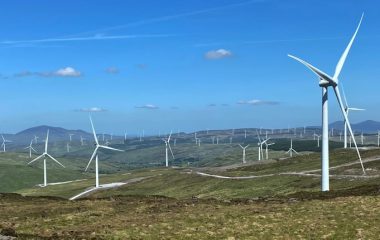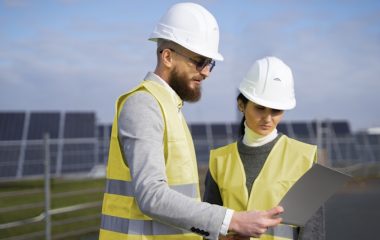
Photo: Ministry of Economy
Kosovo* aims to boost the share of renewables in electricity consumption to at least 35% by 2031, according to the government’s draft energy strategy. It envisages a total of 1.4 GW in such capacity including 100 MW from prosumers. Another priority is to achieve market integration with Albania next year.
Minister of Economy of Kosovo* Artane Rizvanolli presented the energy strategy until 2031 with an emphasis on renewables, which she said are its cornerstone. Total installed electricity generation capacity is currently 1.54 GW, of which the two obsolete lignite-fired power plants account for 84%.
The share of renewable energy in consumption in the sector is envisaged to climb to a minimum of 35% by the end of the period, compared to 6.3% from last year and the target of 13% for 2025. It will allow the reduction of greenhouse gas emissions in the electric power system by 32%, according to the document.
The energy strategy was submitted for public consultation until June 27.
Target for power capacity from renewables for 2025 is 490 MW
Kosovo* is planning to develop wind and solar power capacity to reach a total of 1.4 GW in renewables in 2031 including 100 MW in the prosumers segment with the possibility to increase the target in the meantime. The goal for 2025 is 490 MW, two times more than in 2021. Wind power contributed 137 MW to the mix last year, compared to 101 MW in hydropower and just 10 MW in photovoltaics and 1.2 MW in biomass.
Prosumers had 2 MW of overall capacity last year. The level should be five times higher in 2025 and rise tenfold from there by 2031.
Investments in the grid need to enable the integration of a total of 500 MW from wind and solar by 2025 and 2 GW by 2031. The government said another goal is to more than halve distribution losses to 9%, with an intermediary target of 14.5%.
Market integration with Albania to be completed next year
“Market integration with Albania is a top priority and particularly important for Kosovo*. The energy systems of Kosovo* and Albania are complementary, thermal in Kosovo* and hydro in Albania. Kosovo* does not have flexible and rapid response generating units to serve as a system backup capacity, while Albania has many such units,” the strategy reads.
The document allows the possibility to establish gas interconnections
The most important first step will be the full operation of the Albanian Power Exchange (ALPEX), which is expected in early 2023, the government stressed.
All gas projects so far have been abandoned. However, the strategy left the door open for the possibility of coinvestment in gas-fired power plants in Albania, North Macedonia in Greece. The options for building a domestic natural gas-based system and power generation capacity are being analyzed in the upcoming Gas Master Plan and the feasibility study for an interconnection with North Macedonia,
Subsidies for vulnerable households to get through energy transition
The ongoing energy crisis proved that Kosovo’s* energy system needs to undergo a profound transformation to become more resilient, independent and flexible, the strategy adds. The government said it is committed to ensuring social justice in the transition. Citizens will have access to affordable energy and will be empowered to participate in the sector with production and self-consumption, it reads.
Following reconstruction, old coal plant Kosovo A will be switched to strategic reserve in 2028
According to the document, vulnerable households will benefit from subsidies for house insulation, the installation of solar panels, purchase of efficient household appliances and efficient heating systems.
Kosovo* intends to get ready for a carbon pricing system by 2025. It will enable the introduction of a carbon price which will gradually increase, the energy strategy shows. The goal is to integrate with the European Union Emissions Trading System by 2031.
As for the plans to reconstruct the lignite-fired thermal power plants, the two remaining units in Kosovo A are envisaged to be subsequently switched to reserve mode in 2028 and works on Kosovo B’s two units should be finished in 2024 and 2025 and make them more reliable.









Be the first one to comment on this article.